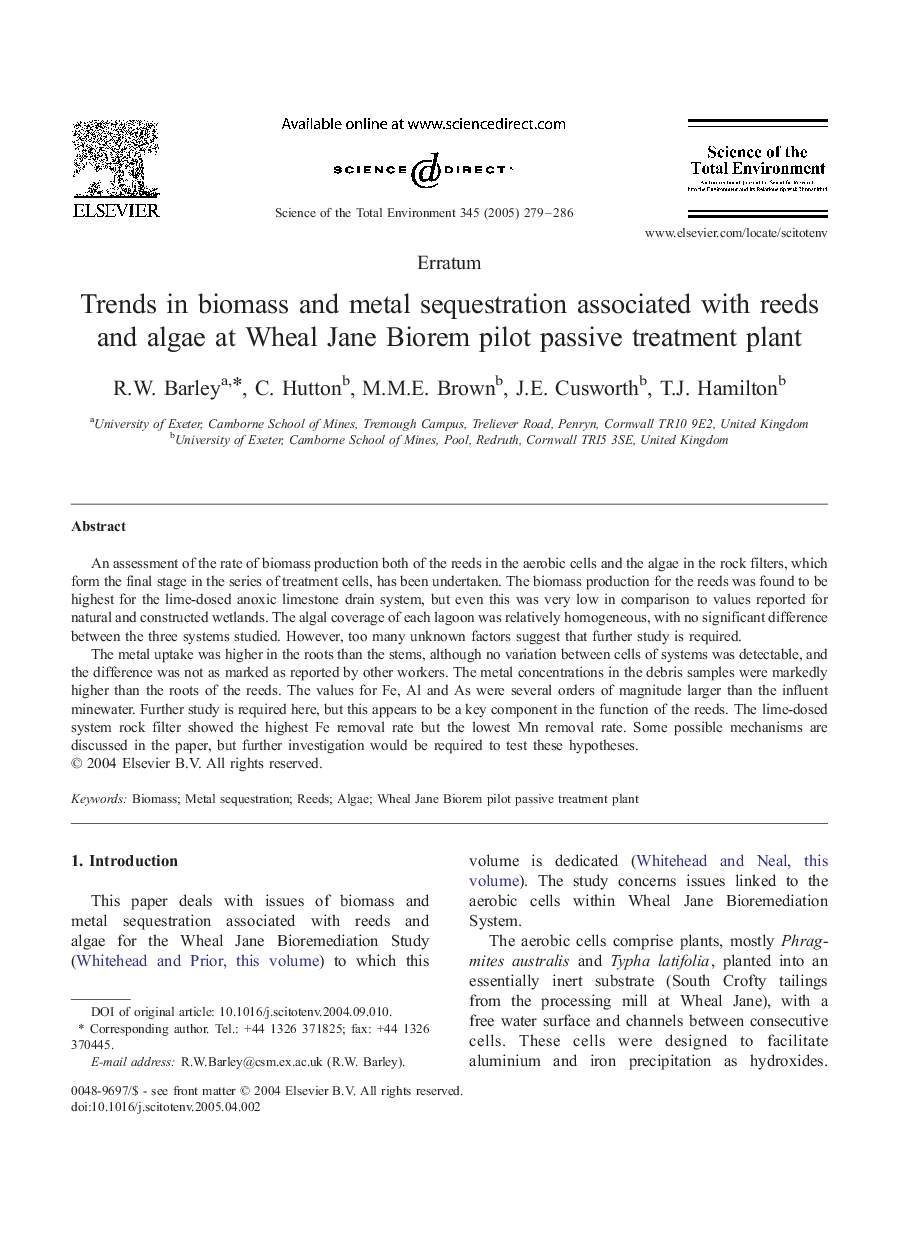| Article ID | Journal | Published Year | Pages | File Type |
|---|---|---|---|---|
| 10110809 | Science of The Total Environment | 2005 | 8 Pages |
Abstract
An assessment of the rate of biomass production both of the reeds in the aerobic cells and the algae in the rock filters, which form the final stage in the series of treatment cells, has been undertaken. The biomass production for the reeds was found to be highest for the lime-dosed anoxic limestone drain system, but even this was very low in comparison to values reported for natural and constructed wetlands. The algal coverage of each lagoon was relatively homogeneous, with no significant difference between the three systems studied. However, too many unknown factors suggest that further study is required. The metal uptake was higher in the roots than the stems, although no variation between cells of systems was detectable, and the difference was not as marked as reported by other workers. The metal concentrations in the debris samples were markedly higher than the roots of the reeds. The values for Fe, Al and As were several orders of magnitude larger than the influent minewater. Further study is required here, but this appears to be a key component in the function of the reeds. The lime-dosed system rock filter showed the highest Fe removal rate but the lowest Mn removal rate. Some possible mechanisms are discussed in the paper, but further investigation would be required to test these hypotheses.
Keywords
Related Topics
Life Sciences
Environmental Science
Environmental Chemistry
Authors
R.W. Barley, C. Hutton, M.M.E. Brown, J.E. Cusworth, T.J. Hamilton,
